
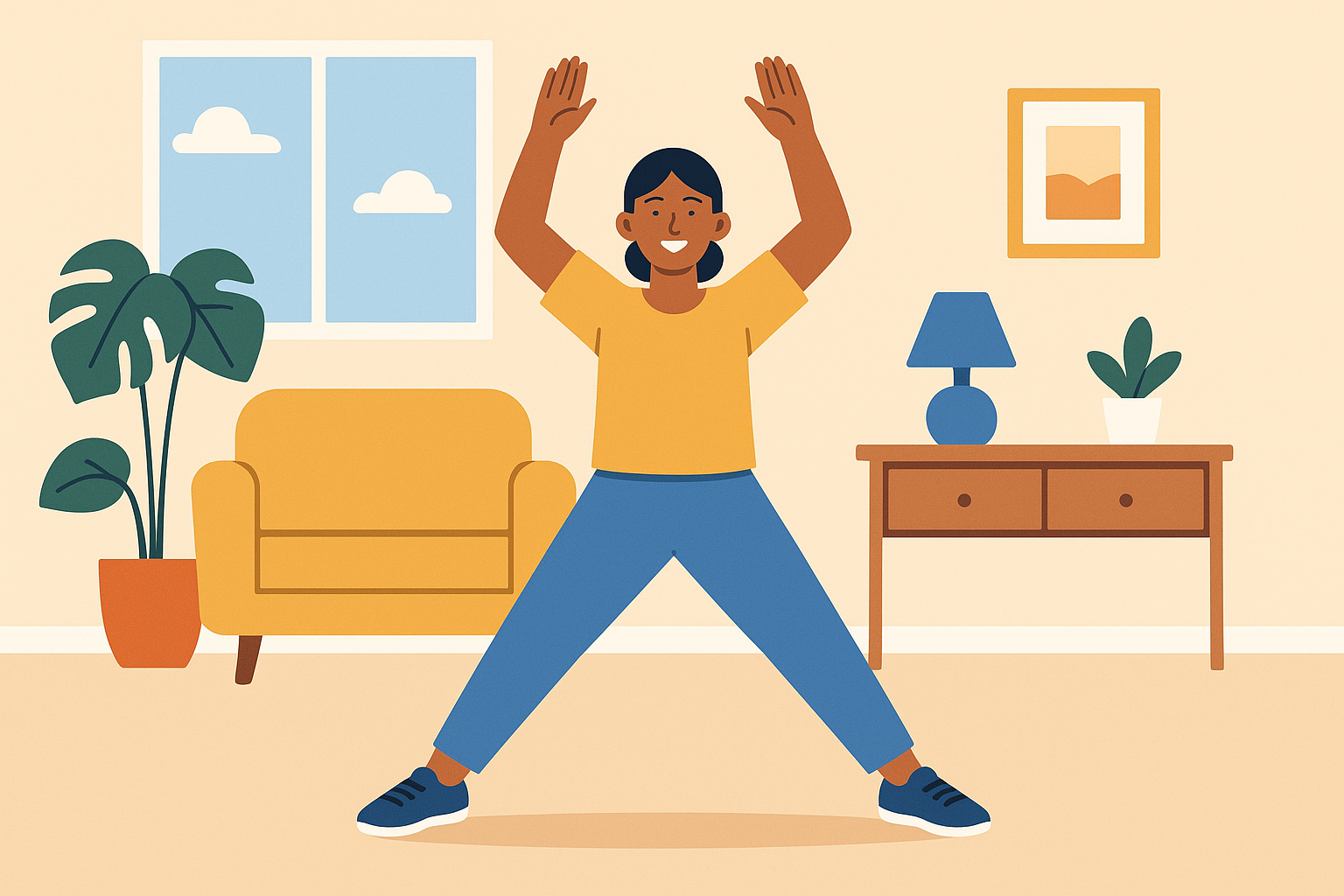
Look, I’m gonna be straight with you – those online calculators that tell you exactly how many jumping jacks you need to burn 500 calories? They’re basically making educated guesses about your body. You might need anywhere from 1,163 to 3,000 jumping jacks to hit that 500-calorie mark, and the real answer depends on YOU – your metabolism, how you move, even what you ate for breakfast.
Here’s what’s really happening: Your body burns calories differently than mine. Way differently. And once you understand why, you can stop fighting against generic advice and start working with your body’s unique quirks to actually get results.
Table of Contents
- Why Generic Calorie Calculators Are Lying to You
- Your Body’s Unique Metabolic Blueprint
- The Hidden Physics of Every Jump
- Recovery: Where the Real Calorie Burn Happens
- Turning Jumping Jacks Into Actual Weight Loss
- Final Thoughts
TL;DR
- Your personal metabolism can make the difference between needing 1,000 or 2,000 jumping jacks to burn 500 calories
- The surface you jump on and how you move can change calorie burn by up to 35%
- Your body keeps burning extra calories for 1-2 days after you stop (if you do it right)
- When you do jumping jacks matters – timing can create up to 20% difference in results
- For women, hormonal changes can affect calorie burning by 15-25% throughout the month
- Smart interval timing keeps your metabolism fired up for 24-48 hours
Why Generic Calorie Calculators Are Lying to You
I’ve watched countless people get frustrated when their jumping jack results don’t match what those online calculators promised. My friend Sarah got obsessed with hitting exactly 1,500 jumping jacks every day because some app told her that’s what she needed. Three weeks later, she was exhausted and barely seeing results. Meanwhile, her roommate was doing half that number but mixing up the intensity and timing – and she was crushing her goals.
That’s when I realized we’ve been thinking about this all wrong.
According to Fitness Volt, doing 100 jumping jacks will allow you to burn about 43 calories, but this assumes a rate of 25 jumping jacks per minute for an average person. But here’s the thing – there’s no such thing as an “average person” when it comes to how your body burns calories. When you’re trying to figure out how many calories 100 jumping jacks actually burn for YOUR body, these generic numbers become almost meaningless.
Your Metabolic Engine Runs Differently Than Mine
Think of your metabolism like a car engine. Some people got the V8 that burns through fuel fast and powerful. Others got the efficient hybrid that runs steady all day. Neither is better or worse – they just work differently. Your metabolic engine determines whether you’ll breeze through those 500 calories or need to work twice as hard as the person next to you.
The question of how many calories jumping jacks burn becomes deeply personal when you understand these differences. Understanding how your body works is crucial for any fitness routine, just like intermittent fasting requires personalized timing to work effectively with your natural rhythms.
The Thyroid-Adrenal Tag Team Effect
Your thyroid and adrenal glands are like your body’s gas pedal and brake. When they’re working well together, you burn calories like a furnace during jumping jacks. When they’re not? You can do the same workout and feel like you’re moving through molasses.
I’ve seen people with optimal thyroid function burn calories at rates that would make others jealous, while those dealing with thyroid issues struggle to see results despite perfect form and consistency. The frustrating part? Most people don’t even know their thyroid affects their workout results.
Here’s what’s really happening: These two glands can increase or decrease your calorie burn by up to 40% during jumping jacks. That’s the difference between needing 1,000 jumping jacks or 1,400 to hit the same calorie goal.
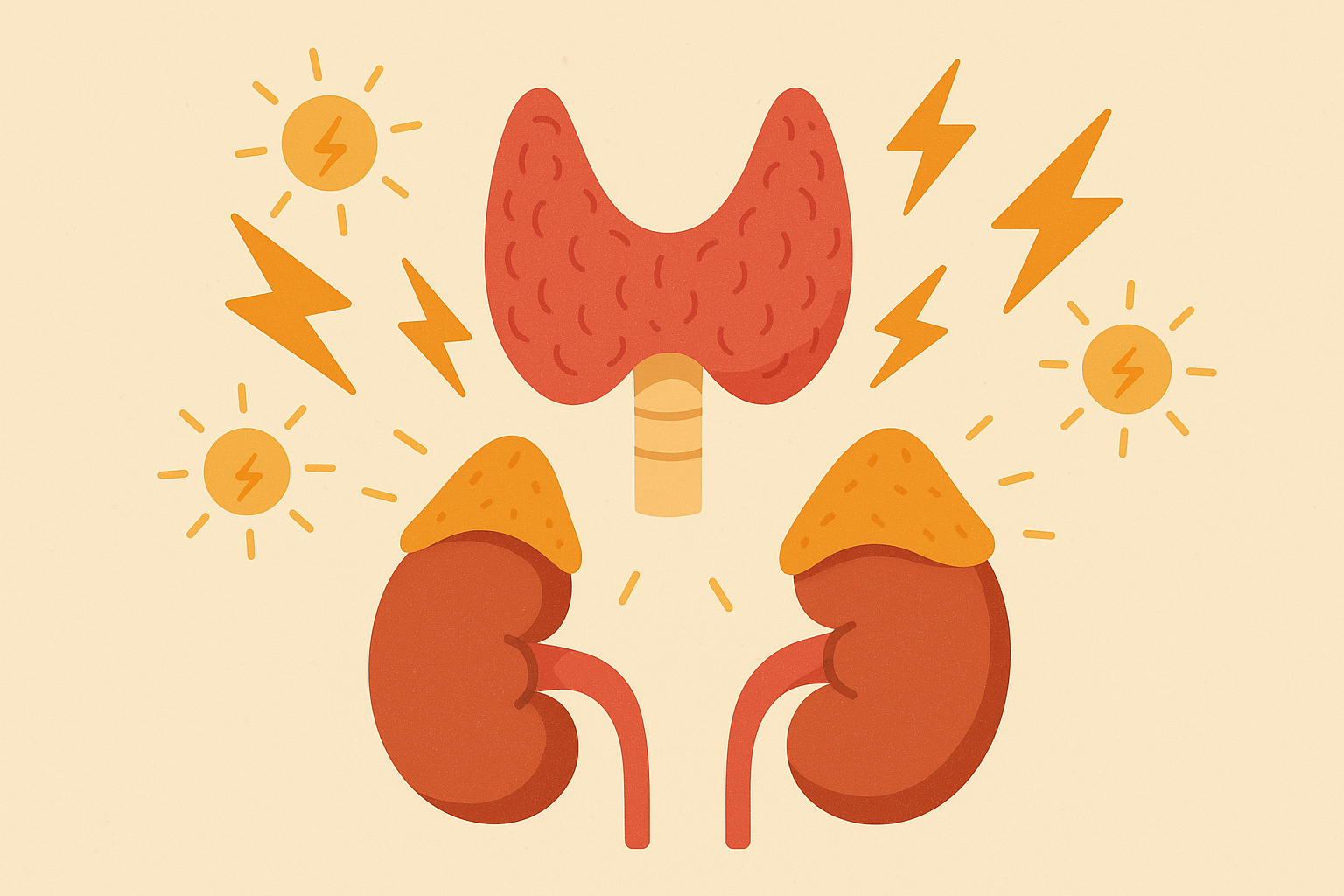
Fast-Twitch vs. Slow-Twitch: Your Muscle’s Secret Identity
Ever wonder why some people seem to excel at quick, explosive movements while others can go forever at a steady pace? It’s all about your muscle fibers, and it completely changes how jumping jacks work for you.
If you’re fast-twitch dominant, you’re built for power. Your jumping jacks will be intense but you’ll need more rest between sets. If you’re slow-twitch dominant, you’re the endurance type who can keep going at a moderate pace for what feels like forever.
Your jumping jack calories will vary dramatically based on which muscle fibers you’ve got more of. Fast-twitch people often feel like they’re working harder during short bursts but recover quickly, while slow-twitch folks can maintain that steady rhythm that looks effortless but adds up over time.
| Muscle Fiber Type | Jumping Jack Performance | Calorie Burn Pattern | Recovery Needs |
|---|---|---|---|
| Fast-Twitch Dominant | Higher intensity, fewer reps | Quick burst, high immediate burn | Longer rest periods |
| Slow-Twitch Dominant | Moderate intensity, more reps | Steady burn, better endurance | Shorter recovery time |
| Mixed Fiber Type | Variable performance | Balanced burn pattern | Moderate recovery |
When Hormones Hijack Your Calorie Burn
Ladies, this one’s for you. I’ve tracked my own workouts for years and noticed distinct patterns in how many calories jumping jacks burn during different times of the month. Week two feels effortless, while week three requires significantly more effort for the same calorie burn. This isn’t weakness – it’s biology.
Monthly hormonal changes can create a 15-25% swing in how efficiently you burn calories. That means the same 500 jumping jacks might feel like a breeze one week and leave you completely wiped out the next. Understanding this pattern helps you plan your workouts instead of wondering why you suddenly feel out of shape.
Body Composition: It’s Not Just About the Scale
Here’s something that blew my mind: Two people who weigh exactly the same can have completely different calorie burns during jumping jacks. It all comes down to what that weight is made of and where it’s distributed on your body.
Research shows that each pound of muscle burns up to 7 calories a day just existing, while fat only burns around 3 calories a day, according to BetterMe. This fundamental difference explains why two people of the same weight can have dramatically different results. When you’re calculating how many calories jumping jacks burn, muscle mass becomes a huge factor.
The Visceral Fat Factor Nobody Talks About
That deep belly fat (the kind you can’t pinch) doesn’t just change how you look – it literally changes how your body moves and burns energy during exercise. It’s like trying to do jumping jacks while wearing an internal weighted vest that also messes with your hormones.
This connects to bigger wellness patterns, similar to how where your body stores tension reveals emotional health patterns that impact your overall fitness results. The connection between stress, fat storage, and exercise efficiency runs deeper than most people realize.
Why Your Limb Length Matters More Than You Think
Think about it – if you’re 5’2″ with shorter arms and legs, your jumping jacks look different than someone who’s 6’4″ with long limbs. The tall person has to move more mass through a bigger range of motion, which burns more calories per rep. But the shorter person can do more reps per minute.
Consider Sarah, who is 5’2″, versus Mike, who is 6’4″. Sarah can bang out 30 jumping jacks per minute without breaking a sweat, while Mike completes 20 per minute but each one requires way more energy. Both might burn similar total calories, but their optimal workout strategies look completely different.
It’s like comparing a sports car to a pickup truck – both get you where you’re going, but they do it in totally different ways.
Age Isn’t Just a Number in Your Calorie Equation
I hate to break it to you, but age really does affect how your body handles jumping jacks. It’s not just about feeling creakier in the morning (though that’s part of it). Your cells literally get less efficient at turning oxygen into energy as you get older.
But wait, it gets more interesting…
Your Cellular Power Plants Are Aging Too
As we get older, our cells literally get lazier at turning oxygen into energy. It’s like having an older phone – everything just runs a bit slower. This affects both how hard you can push during jumping jacks and how quickly you recover between sessions.
But here’s the cool part: jumping jacks can actually wake those lazy cells back up. Regular high-intensity exercise stimulates your body to build better cellular energy factories. Your jumping jacks today are literally building a better metabolism for tomorrow.
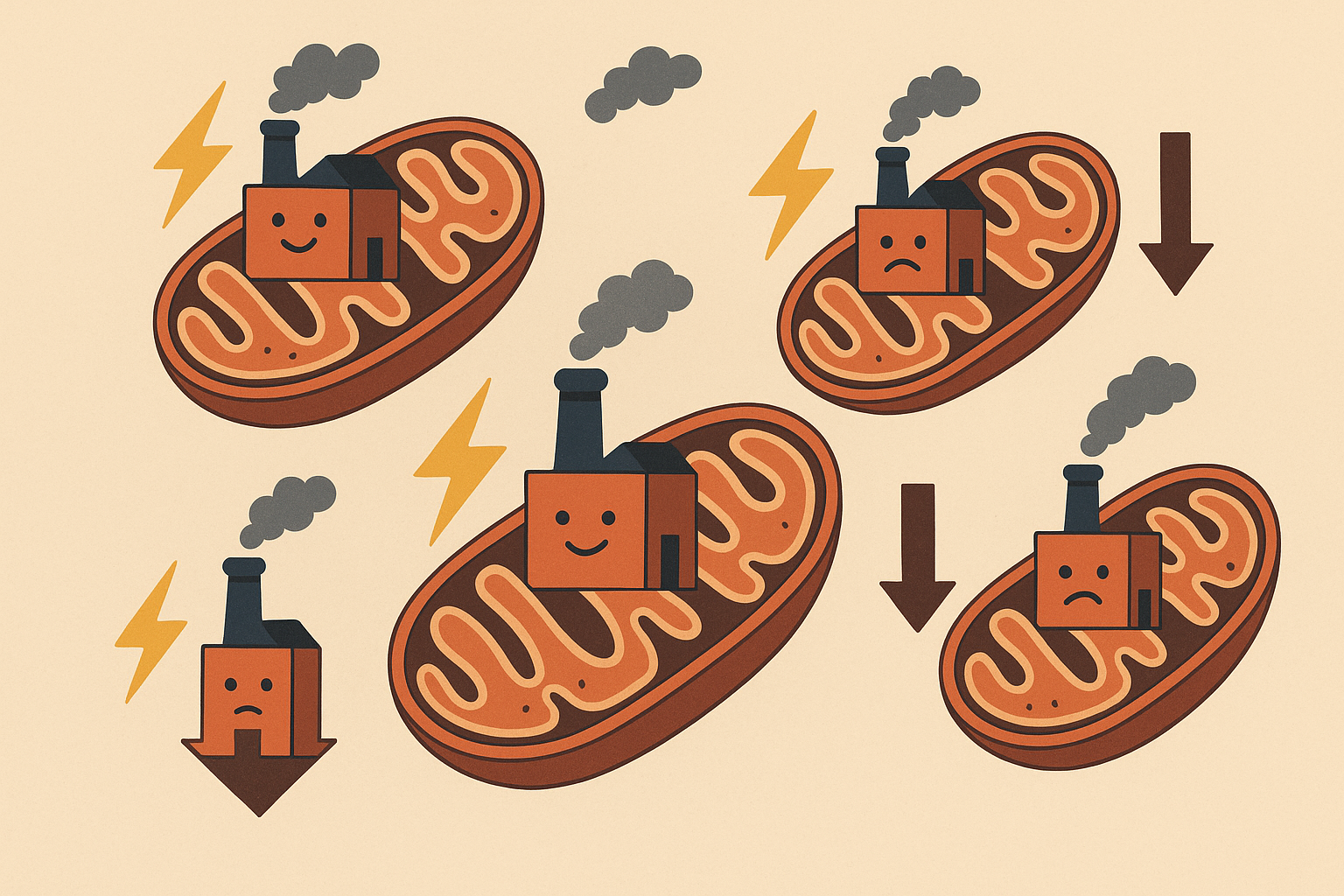
Your Body’s Unique Metabolic Blueprint
After trying every jumping jack “hack” I could find online and tracking my results obsessively (yeah, I’m that person), here’s what I’ve learned: Understanding how YOUR body works is way more valuable than following generic advice.
I used to get frustrated comparing my results to fitness influencers online until I realized I was trying to fit my body into someone else’s blueprint. Once I started paying attention to my own patterns – when I had more energy, what surfaces felt better, how my body responded to different timing – everything clicked.
Working with your metabolic blueprint rather than against it makes exercise feel less like punishment and more like you’re finally speaking your body’s language.
The Hidden Physics of Every Jump
Okay, this is where things get really interesting. Every time you do a jumping jack, you’re basically conducting a physics experiment with your body. You’re converting stored energy into movement, dealing with gravity, and losing energy to heat, sound, and the surface you’re bouncing on.
Most calorie calculators completely ignore these energy losses, but they can make a huge difference in how hard your body actually has to work.
Ground Reaction Forces: Your Floor Is Part of the Workout
I discovered this accidentally when I moved my workout from my hardwood living room to my carpeted bedroom during a particularly cold winter. The same 500 jumping jacks left me significantly more winded on carpet, and I initially thought I was getting out of shape. Turns out, I wasn’t losing fitness – I was just accidentally making my workout harder.
Here’s what’s happening: Hard surfaces like concrete bounce back about 85% of the energy from your landing, basically helping you with your next jump. But thick carpet? It absorbs up to 30% of that energy, meaning your muscles have to work harder to get the same height on each jump.
Surface Materials: The Energy Thief You Never Considered
Think of it this way – if you’re doing jumping jacks on concrete, it’s like bouncing a ball on the sidewalk (lots of bounce back, less work for you). But on thick carpet? That’s like trying to bounce a ball in sand – your body has to work way harder because the surface isn’t helping you out.
| Surface Type | Energy Return | Calorie Burn Impact | Joint Stress Level |
|---|---|---|---|
| Concrete | 85% | Lowest burn | Highest stress |
| Hardwood | 70% | Low-moderate burn | High stress |
| Gym Mat | 45% | Moderate burn | Moderate stress |
| Thick Carpet | 30% | Highest burn | Lowest stress |
| Sand/Beach | 15% | Maximum burn | Variable stress |
So if you’re trying to burn more calories, ditch the fancy gym floor and do your jumping jacks on your bedroom carpet. Your legs will hate you, but your waistline will thank you.
Your Shoes Are Energy Storage Devices
Here’s something most people never think about: Your shoes are basically energy storage devices. Those big, cushy running shoes? They’re absorbing energy that would otherwise help with your next jump, making each repetition more work for your muscles.
Running shoes with maximum cushioning can increase calorie burn by 12-18% compared to minimal footwear. It’s like the difference between jumping on a trampoline versus jumping on concrete – one gives you a boost, the other makes you work for every inch.
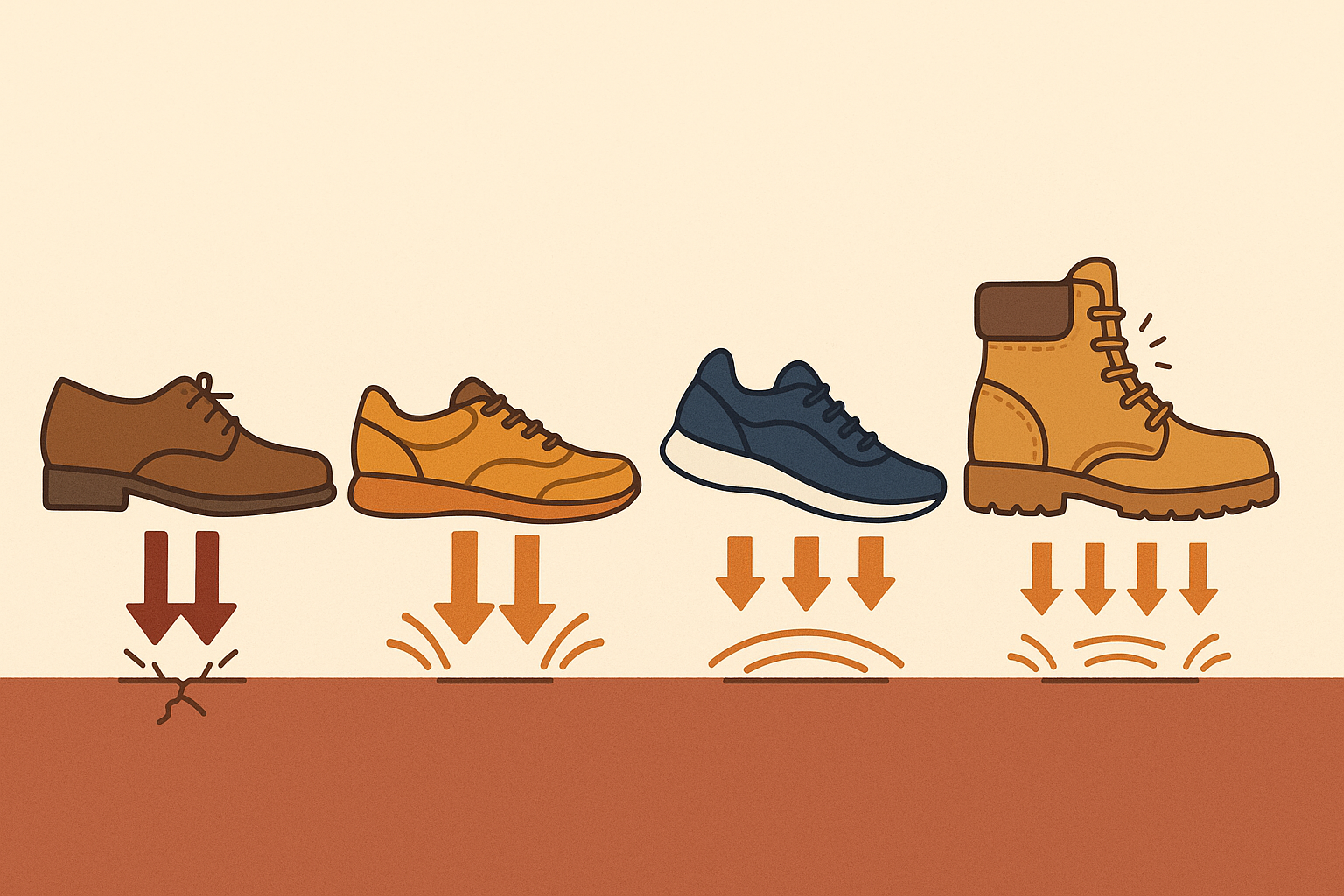
Movement Quality: Small Changes, Big Calorie Differences
Everyone thinks more jumping jacks equals more calories burned. But I learned the hard way that 2,000 sloppy jumping jacks will get you nowhere fast, while 500 really good ones can leave you sweating buckets.
Small changes in how you move create huge differences in energy expenditure. Some variations burn nearly double the calories of others just by getting more muscles involved and moving more efficiently.
Recent fitness research highlighted in Prevention’s guide to calorie-burning exercises emphasizes that exercises using multiple muscle groups burn significantly more calories, with experts noting that “compound movements use multiple muscle groups at once” leading to higher energy expenditure. This validates what I’ve seen in my own workouts – the more muscles you engage, the more calories you burn.
Arm Swing Mechanics: The Upper Body Multiplier
I used to think the arm movement was just for show until I tried doing jumping jacks with my arms at my sides. The difference in effort was immediately noticeable – and not in a good way. My heart rate barely elevated, and the whole exercise felt pointless.
Full overhead arm swings synchronized with your leg movement can increase calorie burn by up to 35% compared to partial arm movements. You’re basically turning jumping jacks from a leg exercise into a full-body calorie-burning machine.
Landing Patterns: How You Hit the Ground Matters
How you land makes a real difference in both how many calories you burn and how your joints feel afterward. Heel-first landings create different energy patterns than landing on your forefoot, affecting both calorie burn and joint stress.
My friend Jessica discovered that switching from heel-first to forefoot landings during her jumping jacks reduced her knee discomfort while actually making the exercise feel harder – indicating she was burning more calories. This simple form adjustment let her extend her workouts and get better results.
Core Engagement: The Hidden Calorie Burner
Here’s a secret that can boost your calorie burn by 8-15% without doing a single extra jumping jack: engage your core. I’m talking about consciously bracing your abs like someone’s about to poke you in the stomach.
This internal muscle activation creates extra metabolic demand that doesn’t show up in calorie calculators but definitely shows up in your results. Plus, it makes you move better and reduces injury risk.
Core Engagement Checklist:
- Breathe out during the jump phase
- Pull belly button toward spine
- Keep your back in a neutral position
- Shoulders stay over hips
- Don’t hold your breath (seriously, keep breathing)
Recovery: Where the Real Calorie Burn Happens
Here’s where the magic really happens with jumping jacks. I used to think the workout ended when I stopped moving, but tracking my metabolism showed me that my body was working overtime for hours afterward.
The calories you burn during jumping jacks are just the appetizer. The main course happens during recovery, when your body goes “What the heck just happened?” and spends the next day or two trying to get back to normal – which means burning extra calories while you’re sitting on the couch watching Netflix.

EPOC: Your Body’s Afterburner System
Your metabolism is like a campfire – jumping jacks are like throwing gasoline on it. Done right, that fire keeps burning hot long after you stop adding fuel. This afterburn effect can double or triple your total calorie burn from a single workout.
The CDC claims that when you do jumping jacks at a vigorous pace, you burn approximately 7 calories per minute, according to BetterMe. However, this doesn’t account for the afterburn effect, which can extend calorie burning for hours after your workout ends.
Interval Timing: The Secret to Maximum Afterburn
Here’s what actually works in real life (not just on paper): Specific work-to-rest ratios during jumping jack intervals can increase your post-exercise calorie burn by 200-400%. It’s like your metabolism got a double shot of espresso and forgot to calm down.
As noted in Eat This, Not That’s holiday workout guide, HIIT training that “combines short bursts of intense exercise with periods of rest” not only “boosts your metabolism” but also “burns calories” long after the workout ends, making it highly effective for busy schedules.
The key is hitting that sweet spot where you work hard enough to create metabolic disruption but not so hard that you can’t recover properly.
Heart Rate Zones: Finding Your Metabolic Sweet Spot
Now, this is where most people mess up. You need to hit 85-92% of your maximum heart rate during jumping jack intervals to trigger maximum afterburn. But you can’t just go all-out every time – your body needs precise recovery management to avoid burning out.
This heart rate targeting transforms random jumping into a scientifically optimized calorie-burning protocol. It’s the difference between throwing darts blindfolded and actually aiming at the bullseye.
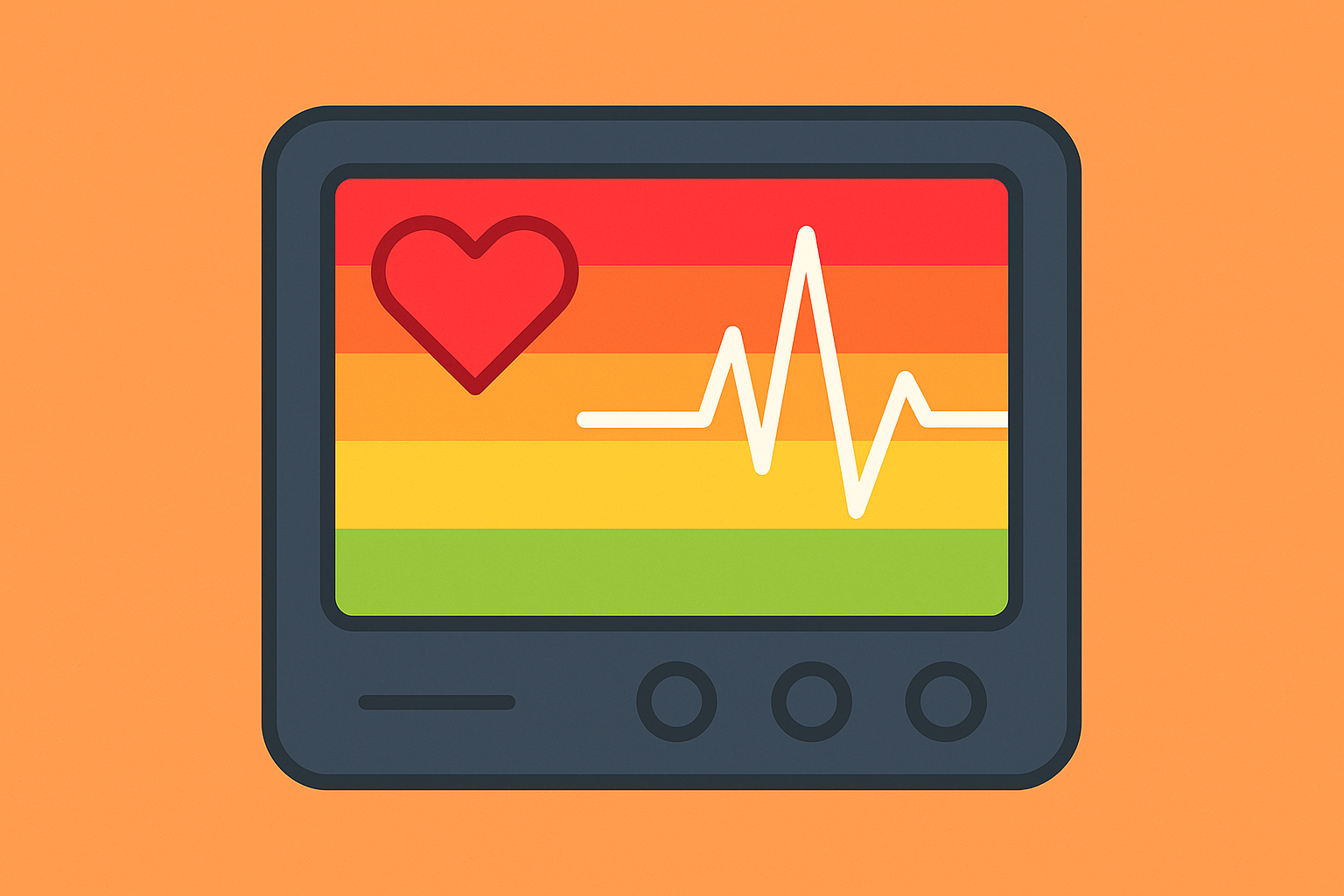
Metabolic Flexibility: Training Your Body to Burn Better
Regular jumping jack training improves your body’s ability to switch between burning carbs and fat, making your overall metabolism more efficient. It’s like teaching your body to be bilingual – the more fluent it becomes, the better it performs in any situation.
This metabolic adaptation process works similarly to how cellular autophagy can be activated through specific lifestyle practices to enhance overall metabolic efficiency.
Fat vs. Carb Burning: Optimizing Your Fuel Mix
When you’re wondering how many jumping jacks burn 100 calories, the fuel source your body uses makes a significant difference. Training your body to burn fat during high-intensity jumping jacks requires specific nutritional timing, but it can increase your overall calorie burn efficiency by 25-40%.
Think of it like this: Carbs are like kindling – they burn hot and fast. Fat is like hardwood logs – it burns longer and provides more total energy. Teaching your body to access both efficiently during exercise creates lasting improvements in how you burn calories all day long.
Turning Jumping Jacks Into Actual Weight Loss
Look, I know this sounds like a lot to think about when you just want to know how many jumping jacks to do. But stick with me – once you understand your body’s quirks, this stuff becomes second nature.
Converting jumping jack calorie burn into actual weight loss requires understanding the relationship between exercise timing, nutrition, stress management, and recovery. It’s not just about moving your body – it’s about creating a system that works with your natural rhythms.
I’ve watched too many people burn out from focusing solely on how many jumping jacks to lose weight without considering the bigger picture.
Circadian Timing: When You Jump Matters
The time of day you perform jumping jacks affects your hormone levels, body temperature, and how efficiently you burn calories. We’re talking about up to 20% variation in effectiveness based purely on timing. Working with your body’s natural rhythms can significantly improve your results without changing anything else about your workout.
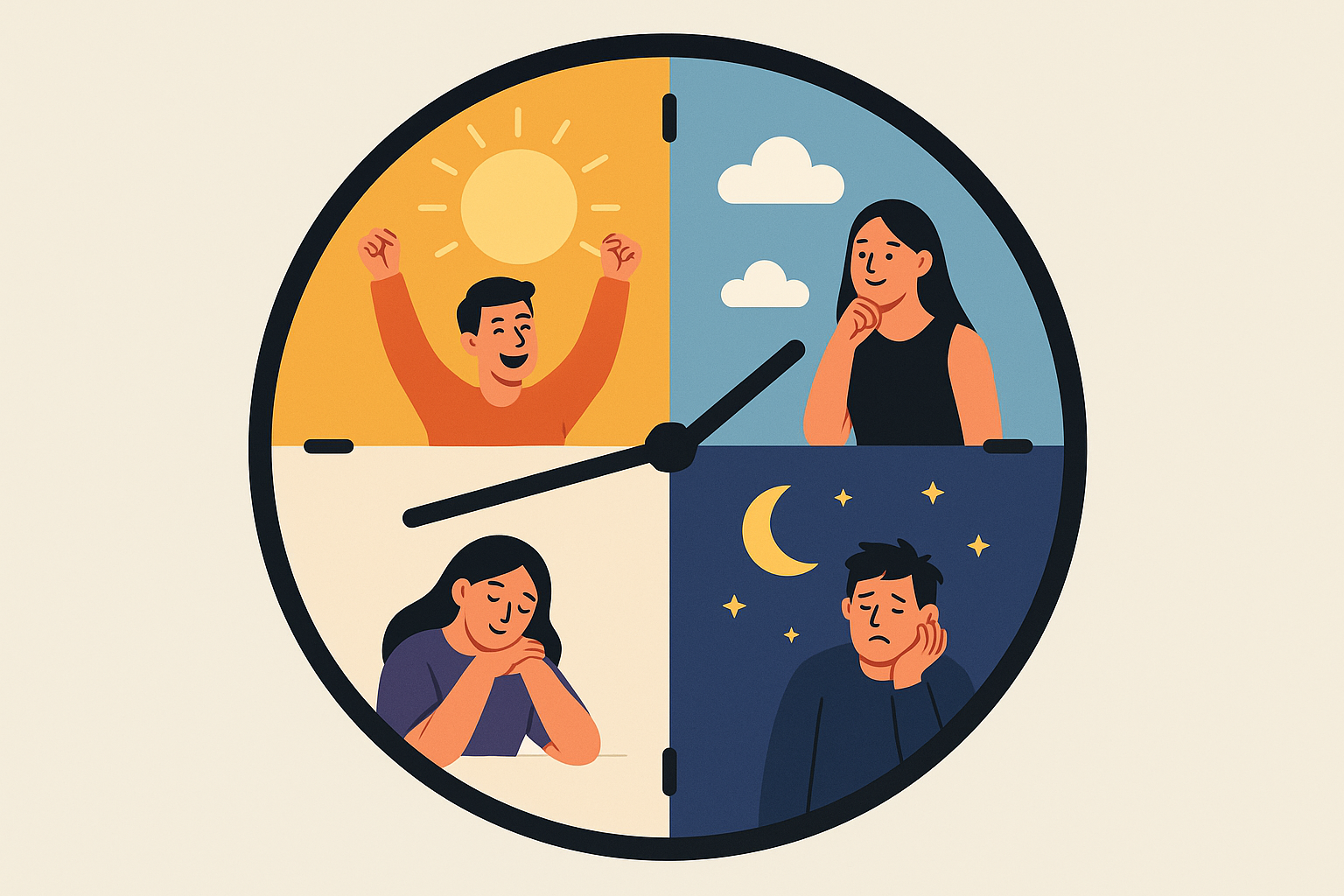
Morning vs. Evening: Choosing Your Metabolic Window
Morning jumping jacks leverage elevated cortisol and growth hormone levels for enhanced fat burning, while evening sessions can improve insulin sensitivity for the following day. Both have benefits – it’s about finding what works for your schedule and goals.
David, a busy executive, found that doing 500 jumping jacks at 6 AM before his shower gave him more energy throughout the day and better fat loss results compared to his previous evening routine. The morning timing aligned with his natural hormone peak, maximizing his metabolic response.
But wait, it gets more interesting – some people are natural night owls whose bodies don’t fully wake up until afternoon. For them, evening workouts might be more effective despite the hormonal differences.
Nutrition Timing: Fueling Your Calorie Burn
Strategic eating patterns before and after jumping jack sessions can enhance calorie burn during exercise and maximize recovery. Your nutrition becomes a workout performance enhancer rather than just fuel.
The question of how many jumping jacks will burn 100 calories becomes more complex when you factor in nutritional timing and its effects on how efficiently your body burns energy.
Pre-Workout Fueling: Fasted vs. Fed Training
Fasted jumping jacks increase fat burning by 15-25%, but may reduce your total capacity to work hard. It’s like choosing between a sports car with a small tank versus a truck with a big tank – both have advantages depending on what you’re trying to accomplish.
Pre-Workout Nutrition Checklist:
- Consider when you last ate (2-4 hours makes a difference)
- Assess your energy levels and workout intensity goals
- Drink water 30 minutes before exercise
- If eating, choose easily digestible carbs and minimal fat
- Test both fasted and fed states to find your sweet spot
Post-Workout Recovery: The Protein Window
Protein timing within 30 minutes of jumping jack sessions can increase muscle building and extend the calorie-burning recovery period. This recovery nutrition strategy maximizes your body’s response to the workout while supporting continued calorie burn during the repair process.
Understanding how many jumping jacks burn 500 calories becomes more meaningful when you optimize the recovery phase to extend that calorie burn for hours afterward. The calories burned during your workout are just the beginning of the metabolic story.
This recovery nutrition approach aligns with principles found in balanced macronutrient timing for optimal metabolic health that supports long-term fitness goals.
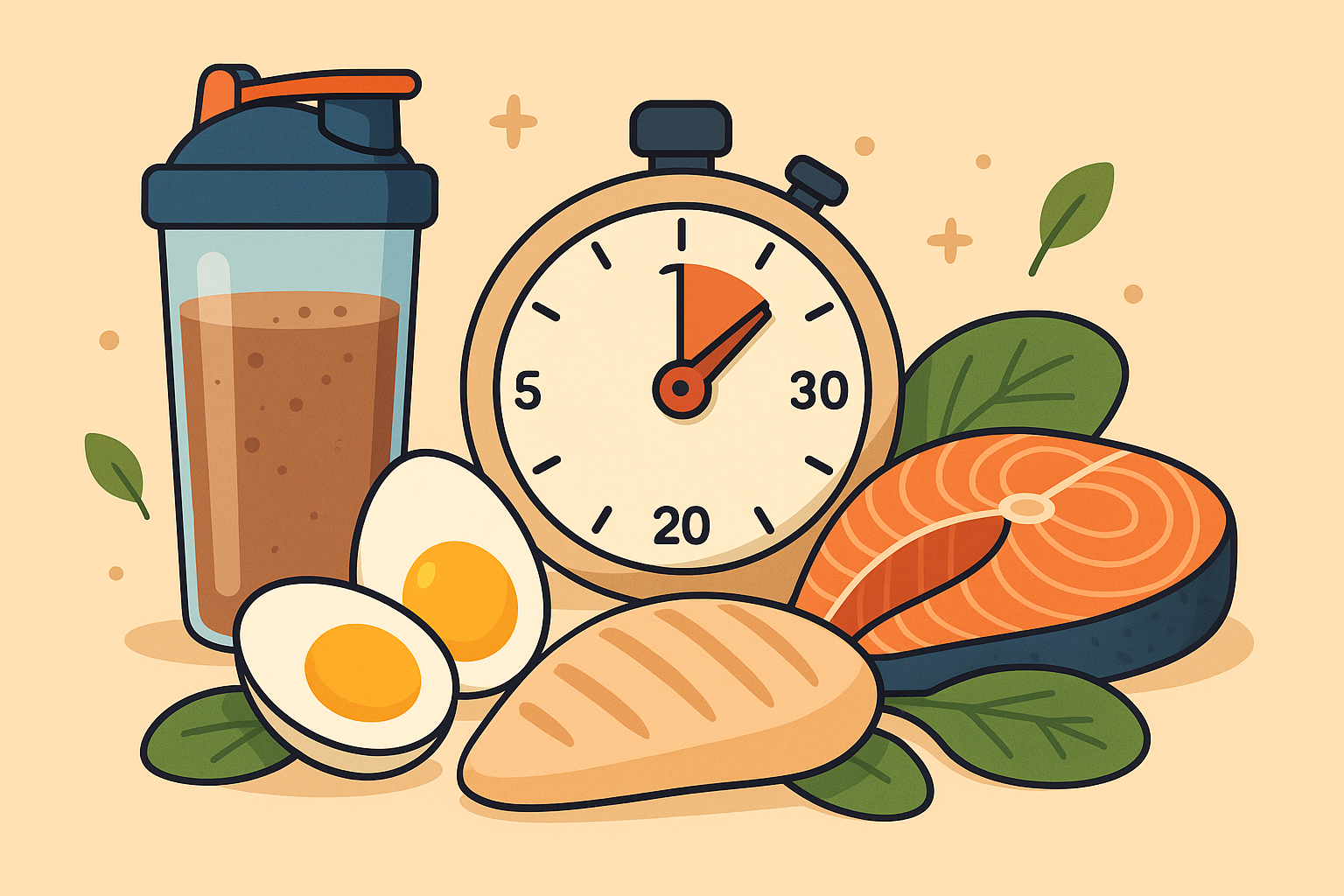
Have you been wondering why your jumping jack routine isn’t delivering the results you expected? Organic Authority’s wellness experts understand that sustainable fitness results come from working with your body’s natural systems rather than against them. Our evidence-based approach to movement and nutrition can help you optimize your exercise routine for your unique metabolic profile. Ready to discover what works specifically for your body?
For those looking to maximize their home workout effectiveness, understanding alternative exercise equipment options can complement your jumping jack routine perfectly.
Final Thoughts
Here’s the bottom line – you don’t need to become a jumping jack scientist. But understanding a few key things about how YOUR body works can save you months of frustration and actually get you the results you want.
I’ve spent years watching people get frustrated with generic fitness advice that promises specific calorie burns without considering individual differences. The truth about jumping jacks and calorie burn is way more interesting than most calculators suggest – your unique metabolism, how you move, timing, and recovery strategies all play huge roles in determining whether you’ll need 1,000 or 2,000 jumping jacks to burn 500 calories.
What excites me most about this deeper understanding is how it shifts the focus from mindless rep counting to strategic, personalized exercise planning. When you understand that your thyroid function, muscle fiber type, hormonal cycles, and even the surface you exercise on all impact your results, you can make informed decisions that actually work for your body instead of fighting against it.
But here’s the real game-changer: it’s not just the calories you burn during those jumping jacks – it’s the 24-48 hours of elevated metabolism that follows when you do them strategically. This afterburn effect can multiply your total calorie expenditure by several hundred percent, making the exercise session itself just the beginning of your fat loss process.
This holistic approach to fitness mirrors the principles found in biohacking strategies that optimize your body’s natural systems for maximum health benefits.
Remember, sustainable weight loss isn’t about finding the perfect number of jumping jacks to burn 500 calories – it’s about creating a personalized system that works with your schedule, preferences, and biological rhythms. Start simple, pay attention to what feels different, and adjust based on what you discover about your unique patterns.
So here’s what I want you to try this week: Pick one variable – maybe it’s the time of day, maybe it’s the surface you’re on, maybe it’s how you move your arms – and experiment. Your body will tell you what works better. The jumping jack calorie equation becomes much more interesting when you realize you have control over so many variables that affect the outcome.
Start where you are, use what works for your body, and remember that the best workout is the one you’ll actually stick with. Your metabolism is unique, your schedule is unique, and your results should be too.

